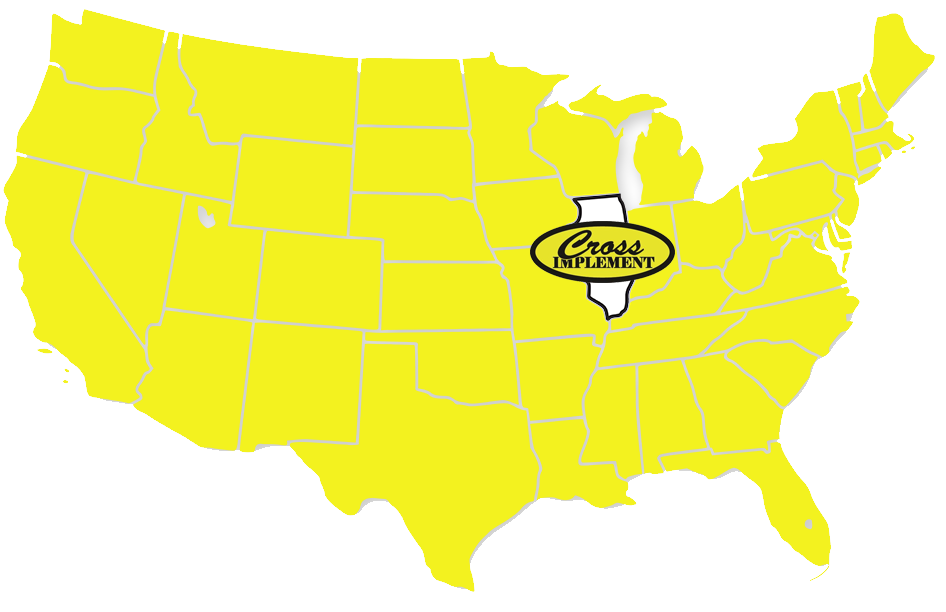An important new feature on the S-Series Combines, called isochronous governor
allows cleaning shoe drives to operate at a constant speed, enhancing the
system’s overall capacity and efficiency. Isochronous governor electronically
controls the drive speeds via the engine control unit (ECU) as opposed to a
mechanical governor.
Although most customers are familiar with isochronous governor technology (such
as FieldCruise™ in John Deere row-crop tractor applications), it is a new
concept to combines, and this feature will change how a customer will monitor
S-Series Combine performance.
This bulletin is intended to provide
additional information on how the isochronous governor plays into the overall
operation of S-Series Combines.
|
|
| |
Regardless of the engine emission compliance (tier)
level, the isochronous governor works as follows:
- When the separator or unloading auger is NOT engaged and the engine is
running at high idle, the engine will run on a typical engine speed droop curve,
which is similar to a mechanical governor
- The S550 high engine idle, no load speed will be approximately 2550 rpm
- The S660/S670 high engine idle, no load speed will be approximately 2340 rpm
- The S680/S690 high engine idle, no load speed will be approximately 2240 rpm
- As engine load increases, engine speed will slow down and power will rise to
the point of peak power
- When the separator or unloading auger is engaged, the engine will follow an
isochronous or constant engine speed curve
- The S550 engine speed will drop to a unique isochronous speed of 2400 rpm
- The S660/S670 engine speed will drop to a unique isochronous speed of 2200
rpm
- The S680/S690 engine speed will drop to a unique isochronous speed 2100 rpm
- As engine load increases, the engine speed will remain constant until rated
or 100 percent engine load is achieved.
Varying engine
loads will only change the engine speed within a range of +/- 20 to 30 rpm.
This small range of engine rpm fluctuation results in constant drive speeds for
enhanced performance. If the engine load continues to increase beyond rated or
100 percent power, the engine will fall off the isochronous or constant speed
curve and the engine speed will decrease resulting in reduced cleaning system
performance.
|
|
| |
In the past, combine operators utilized the following
parameters (among others) to run combines during harvest:
- Monitored the calibrated loss monitor
- Monitored tailings monitor
- Monitored engine rpm on the corner post.
- Monitored engine rpm by listening to the engine sound fluctuations from
yield changes and/or slug feeding
|
|
| |
S-Series Combine operators will no longer be able to view
or hear engine rpm fluctuate while harvesting due to:
- S-Series cab being much quieter than the 70 Series STS™ cab
- Engine exhaust exits the rear of the combine
- When engine is at high idle, the engine rpm will be at an isochronous or
constant speed when the separator or unloading auger is engaged
- Slug feeding reduced due to uniform feeding in soybeans and small grains
with the 600FD HydraFlex™ Draper Platforms
|
|
| |
Depending on crop conditions, the capacity of the
S-Series Combine may be limited in one or more areas. The combine operator will
need to utilize the following monitors (among other parameters) to determine the
limiting factor and operate the combine at maximum capacity.
- Monitor the calibrated loss monitor
- Monitor the tailings monitor
- Monitor the engine power meter
- The display bars in the green indicate the current engine power up to rated
or 100 percent power. Bars displayed in this region also represent the power
when the engine is running at isochronous engine speed for peak cleaning system
performance
- The display bars in the yellow represent the engine bulge power or power
beyond rated. Bulge power is available to power through tough conditions and
slugs. Engine speed will decrease as the load increases when operating in this
region
- The display bars in red indicate peak power. There is no reserve power at
this point to power through tough conditions and slugs, and engine speed will
continue to decrease
- To maximize machine performance and engine economy, operate the combine at
the top of the green power-meter display bars
- For example, if operators choose to run at 50 percent, 60 percent, and/or 70
percent of the green power-meter display bars, the combine is not running at
capacity and their cost per bushel can increase
- Operating the machine with the power meter in the yellow or red region will
result in reduced engine and cleaning system speed and reduced performance.
Additionally, operating the combine with the power meter in the yellow will
reduce the bulge power available for tough conditions or slugs. When the combine
is operated with the power meter in the red, there will be no bulge power left
for tough slugs and the low-speed alarm will activate
Reference
feature story Isochronous
engine governor enhances overall capacity and efficiency for additional
information.
|
|
|
|
|
|


